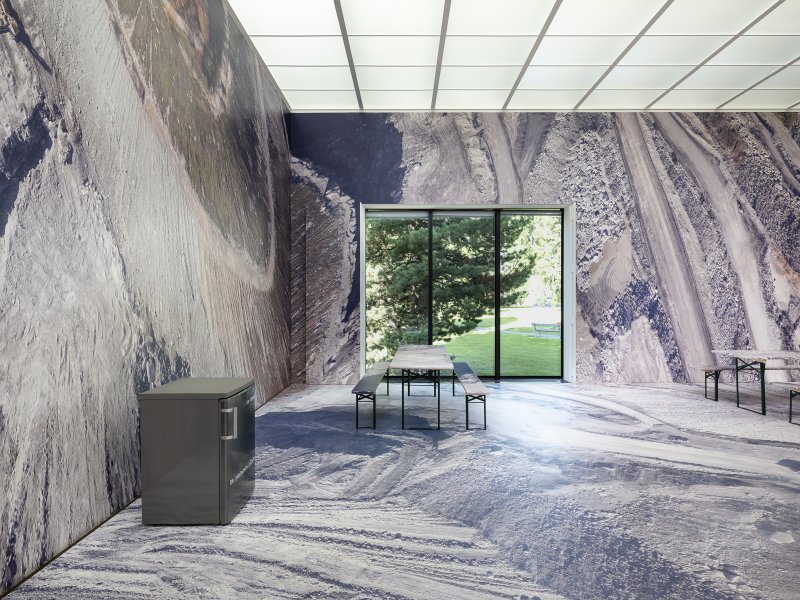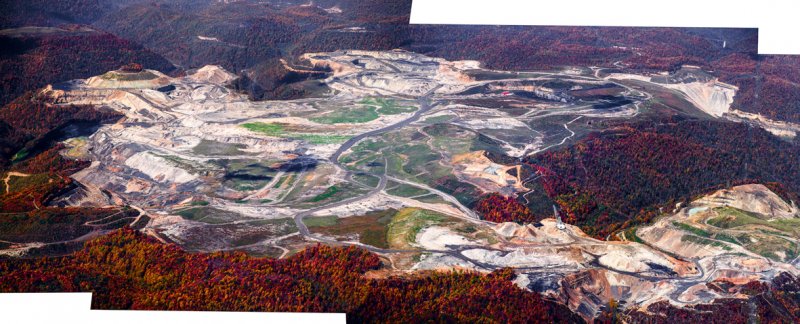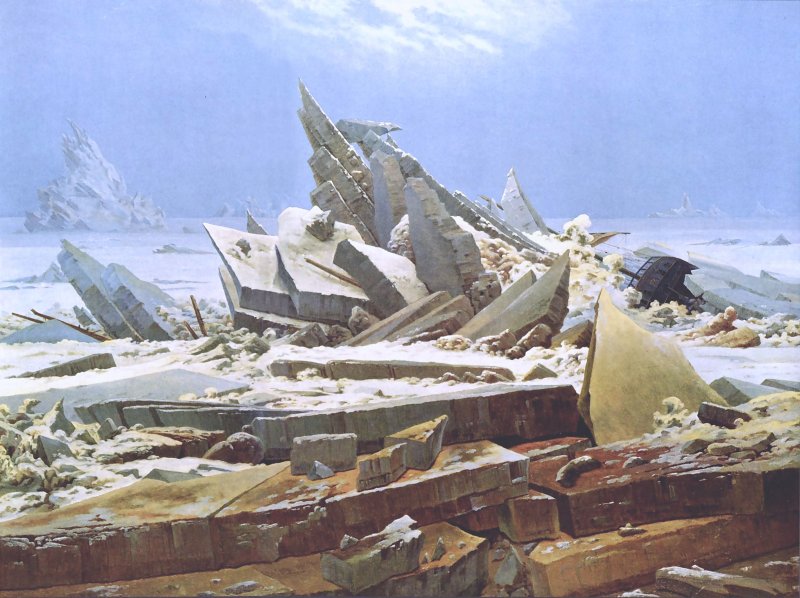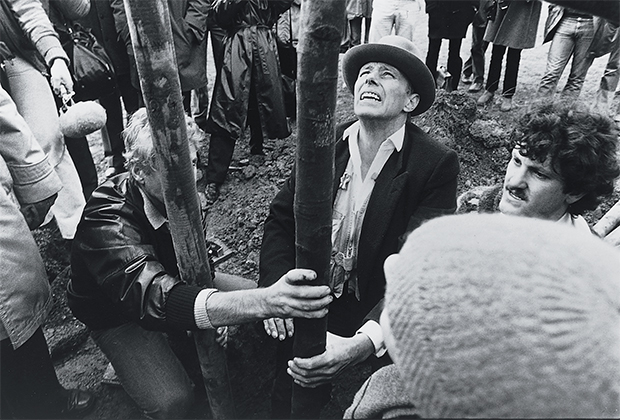Experience and Participation: Mathias Kessler’s conversational impulse
From Dada to more recent socially engaged artwork, the twentieth century has seen a radical transformation in the role of the viewer. No longer just the passive spectator of an exhibition, the visitor has become a co-producer of the work, and sometimes even the medium itself.
‘The art of the aesthetic age has never stopped playing on the possibility that each medium could offer to blend its effects with those of others, to assume their role and thereby create new figures, reawakening sensible possibilities which they had exhausted.’1

From Dada to more recent socially engaged artwork, the twentieth century has seen a radical transformation in the role of the viewer. No longer just the passive spectator of an exhibition, the visitor has become a co-producer of the work, and sometimes even the medium itself. Whether by creating possibilities for interaction between people from different sociological backgrounds, fostering activism within specific communities, or re-enacting historical events, the rise of participatory approaches has opened new political, anthropological, economic, and environmental dimensions to the aesthetic field. The broadened spectrum of aesthetic experience has created greater potential for an artistic gesture or situation to provoke visitors to engage more deeply with social and environmental issues beyond the art context. As Jacques Rancière notes: ‘Critical art must negotiate between the tension that pushes art towards “life” and that on the contrary separates aesthetic sensoriality from other forms of sensible experience.’2 Through years of research, working across different artistic mediums, questioning the history of representation, and inviting visitors to reflect on social-environmental issues, artists like Mathias Kessler have developed an aesthetic-political vocabulary in which the interplay of art and life can trigger a diversity of sensations, cognitive processes, and discussions.
Kessler’s biography may explain some of his research interests, particularly his attention toward nature and exploration. Before mastering his formal practice as an artist, Kessler spent his childhood in the Kleinwalsertal, boardering on the Austrian Allgaeu Alps. His grandfather was a photographer and founder of the local skiing club. The young Kessler had the chance to directly observe how human intervention shapes nature, through the construction of ski slopes and landscaping. He became aware early on of the appeal (and illusory character) of so-called wildness or untouched nature, especially used for commercial gain. The body of artwork he has developed since then testifies to his interest in a sort of psychological-romantic paradox, linking the imaginary and its representation to humanity’s real impact on the earth. Whether in his studio working with chemical and biological processes – as in the work Nowhere to be Found, where he placed a human skull in an aquarium, allowing a small coral implanted into the skull to grow larger over time – or during expeditions to remote parts of the world, like for his 2007 series Staging Nature, he photographed icebergs by night, starkly illuminated by the artificial light of a projector. Kessler shows the reciprocal effects between anthropogenic actions, observations, or minimal interventions, and natural phenomena.
Kessler’s specific focus on the natural world can be read both as a commitment to environmental activism, and as a playful, critical perspective on the historical and contemporary legacy of representation itself. As Stephan Berg notes, Kessler’s work combines the perspective of a world in which the synthetic is fundamentally inseparable from the natural with a critique of enduring romantic fictions about nature.3 For this purpose he operates in a constant tension between his artistic research on the contemporary sublime, and, pushing beyond the formal aspects of his work, its cognitive and discursive potential. Though it might seem strange to work between transcendent aesthetic experience and cognitive reasoning, Kessler manages to activate the viewer through a combination of interactive frameworks and physical objects, so that she may access both, even simultaneously. The three works on view in the Kirchner Museum Davos are exemplary of this aspect of his practice, and incorporate breath-taking large-scale installations, provocative and playful social commentary, as well as an inviting context for exchanging ideas.
Immersive photograph – aesthetic experience as body of evidence
Total immersion in an image might be a way to mentally travel to another time and place, change one’s perception, or even encounter the sublime. The image Jarrells Cemetery, N37 °53.96’ W81°34.71’. Eunice Mountain (2012) from Kessler’s West Virginia Mining Landscape series covers the entire floor and walls. More than just a break with the white cube, it transports the viewer into a post-apocalyptic landscape. Even the tables and benches – installed in the room to let visitors not only experience the work individually but also reflect on it together – are covered in the image. A door and a window, which looks onto the mountains and village of Davos, are the only points of escape from the overwhelming image.
The viewer is confronted on all sides with an aerial perspective of what appears at first glance to be a mountain bereft of vegetation. On closer inspection, one recognizes this is an industrial landscape completely transformed by the loaders, power shovels, and trucks also visible in the image. Mining companies, having exhausted the resources beneath the mountains via fracking, are now exploding the upper strata of the mountains. This technique, known ‘mountaintop removal mining’, allows them to separate coal from the surrounding minerals.4 The local vegetation has been entirely replaced by rubble, except in half of the picture, on the front wall, where a partial green area remains. The title of the image offers a clue as to why it stayed untouched: this is the site of a cemetery. And it happens to sit upon millions of dollars’ worth of coal.
For this work Kessler used more than sixty photographs that he took from a plane flying over the site. Through an algorithmic process standard in contemporary cartography, Kessler digitally resized and stitched together the images, rendering them slightly blurry. The resulting image appears more like a giant digital painting, punctuated by a few small gaps in the landscape where Kessler did not have source photographic material. Shifts in perspective where the wall and floor meet contribute to the disorienting effect on viewers. At the same time, by walking across the image, the viewer becomes an element in the installation, towering over the rocks, trucks, and roads.

Questioning the representation of nature in a new geological era
Though able to traverse the destroyed landscape optically and physically, one can never perceive the image in its entirety at once. In other words, the picture is ‘so large that it overwhelms imagination's capacity to comprehend it’ – as Kant described the feeling of the mathematical sublime. Indeed, mountains were the paradigmatic motif of the sublime explored by his contemporaries in painting and literature. As Thomas Schlesser remarks, while traveling across Europe, artists experienced the sublime for themselves in nature, accessing panoramic views from cliffs and mountain peaks.5 From Caspar Wolf’s dramatic paintings of the Alps to Caspar David Friedrich’s allegorical landscapes, nature becomes a source of fear and awe, reflecting the broader shift towards industrialism. The romantic painting of such artists at the turn of the 19th century reflects Kant’s dynamic sublime: ‘The experience of a fearful nature despite knowing oneself to be in a safe position.’6 Kessler operates in this realm as well, immersing the viewer in a terrifying image of nature devastated by human intervention.

The window and door in the room open to a reality seemingly far from that of West Virginian mine country, reassure the viewer of her safety, surrounded by the museum and peaceful Alpine resort. Those openings offer a view to a different kind of constructed environment, of houses and mountains that also break with the romantic notion of untouched nature that is still part of the collective unconscious, used to advertise sports brands, tourist destinations, and even Swiss banks. The setting makes clear that, whether in the mountains outside of the museum, or in the image displayed by Kessler, humans have impacted the environment long-term and on a large scale, even geologically.
In this sense, Kessler’s practice is situated in a broader progressive approach to the contemporary theories and research on the Anthropocene,7 a term coined in 2000 by Paul J. Crutzen and Engen F. Stoermer to express a new geological era of earth that considers humanity, because of its impact on the earth for an extended period, to be itself a geological force. Many have argued it began in the second half of the eighteenth century, with the beginning of the industrial revolution and invention of the steam engine in 1784.8 The scientific recognition of this shift confirms that, as McKenzie Wark argues, ‘the worldview of an ecology that was self-correcting, self-balancing and self-healing is dead.’9 Nevertheless, it remains difficult to explain the correlation between human activity and environmental phenomena such as global warming, because, according to Timothy Morton, it is not immediately visible and too abstract, requiring scientific models to understand. Moreover, the overall effects on a planetary scale might be perceived differently on the local or individual level,10 such as increasingly cold winters despite the overall temperature of the planet rising.
Reflecting the urgency in our time to confront environmental phenomena such as climate change, mass extinction of species, and plummeting pH levels in the ocean that threatens the entire ecosystem, Kessler’s work in West Virginia testifies to the effects of global capitalism on the planet. Although they might not reflect all the effects of the coal industry, such as increased CO2 emissions, and water pollution caused by explosives and the acid used to separate coal, his photographs of the visible aspects of the landscape’s transformation become a body of evidence, documenting the scars of a phenomenon with global implications.
Artistic research: performing history
Beyond photographic work, Kessler’s investigation in West Virginia has a trans-historical orientation reflecting the roots of the coal industry and the miners’ struggles. Kessler has spent no less than six years regularly visiting the region and carrying out long term artistic research, working to avoid exploiting and appropriating the dramatic environmental and political realities of the local situation, and instead build a meta-artwork from his transdisciplinary investigation. By spending time to get to know the inhabitants, activists, and miners, he has gained the trust and acceptance of a variety of stakeholders. Kessler highlights, through interviews with locals and documentary footage, parallels between man-made destruction of the landscape and the corresponding social decay, by which indigenous people have been displaced and the working class alienated.
The famous Battle of Matewan, a shootout in 1920 that saw coal miners pitted against the Baldwin-Felt agency representing the owners of the company, is memorialized today by the inhabitants that organize an annual re-enactment of this key event in the history of mining in West Virginia. His video work Staging Narratives, Matewan Kessler highlights this culture of historical consciousness. By juxtaposing footage of the locals’ re-enactment of the Battle of Matewan with excerpts from the Hollywood film Matewan (1987), directed by John Sayles, he connects two temporalities. The settings and actions in Kessler’s footage mirror the film but the anachronism of the re-enactment highlights the continuous process of social struggle.
Instead of centring himself as the organizer of this local project, Kessler most often remains at the sidelines and collaboratively working to help facilitate activities or discussions between stakeholders. In contrast with the participatory performance work of Jeremy Deller, who famously reenacted the Battle of Orgreave in 2001 with eight hundred historical re-enactors and two hundred former miners, Kessler based his film material on the immanent actions of the inhabitants. His interventions into the performance are decidedly minimal, but his presence nevertheless creates a new situation that has encouraged unplanned networks and initiatives — such as the re-enactors offering on their own to perform specific scenes for the camera, or deciding to open their own museum documenting the history of the mine. Kessler’s presence reflects the transformation made possible when the artist-ethnographer becomes invested in a community, in order to share a certain subjectivity per se, without trying to impose his own opinions and social-cultural perspective.
Contemporary social sculpture: artworks medium of participation
Whether in his film Staging Narratives, Matewan or in his installations, Kessler provides participants the access to open and free experimentation, discussion, and action, with the intent to foster social contact between them, to mix social groups, to mediate artistic and political issues. This form of producing and sharing knowledge recalls the strategies developed by Joseph Beuys in his expanded practice of art, particularly the ‘social sculpture’ he explored from the early ’70s, combining both objects and politically charged statements expressed in what we might call today ‘lecture performance’ to confront the question of democracy across the political, the artistic, and the pedagogical.11 Indeed, Beuys extended this social practice into an ecological frame for documenta VII: for 7000 Oaks (Img. 1), he placed wedge-shaped piles of basalt in front of the Friedricianum with the instruction that each of them must be placed beside an oak tree throughout the city. As Beuys explained in an early statement, he didn’t realize this work ‘to do something urgent for the biosphere or something in harmony with ecology, but to offer, through its process of realization, a better understanding of what ecology is.’12

Facing climate change today, we can see in Mathias Kessler’s work a continuation of this interest in consciousness raising – while also taking in count the contemporary situation and the necessity to act collectively. Instead of basalt stones and oaks, Kessler activates his audience through none other than a refrigerator, filled with beers and a miniature ice sculpture replicating Friedrich’s famous painting Das Eismeer (The Sea of Ice), or Die Gescheiterte Hoffnung (The Wreck of Hope) (Img. 2). The art historical reference confronts visitors once more with the legacy of romanticism,13 this time with an allegorical vision: the leaking boat on the right side of Friedrich’s painting, frozen in the ice has been interpreted, not only as the failure of the German Restoration, but as a broader failure of society.14 Kessler uses both allegory and metonymy: With West Virginia Mining Landscape he depicts a specific case of environmental destruction that refers to the global exploitation of natural resources, both human and non-human, living beings and minerals. With the Eismeer he lets the viewer participate in destroying the romantic ideal, symbolically and literally melting the motifs used by Friedrich each time she opens the fridge door.

Instead of theorizing about the ongoing man-made destruction of nature in writing or public performance, Kessler lets the viewer take on this role, freeing her to speak with a beer in hand in the museum space. As Claire Bishop argues, the rise of participatory art reflects our contemporary need for collective debates on social issues.15 In our time of environmental crisis, Kessler creates settings that trigger the imperative to participate, to act, while also draw on the individual and collective experiences of his viewers. More than a direct political process, it reveals how art might have the potential to trigger broader social and political effects.
This text was originaly published in Mathias Kessler. Staging Nature, ed. by Dr. Thorsten Sadowsky, Kirchner Museum, 2018.
You can order the book directly by writing at: info@kirchnermuseum.ch
-
Jacques Rancière, The Emancipated Spectator (London / New York 2009), pp. 131–132. [translation by Gregory Elliott] ↩
-
Jacques Rancière, Malaise dans l’esthétique (Paris 2004), p. 67. [translation by the author] ↩
-
Stephan Berg, ‘The Invention of Nature’, in: Dieter Buchhart (ed.): Mathias Kessler. Nowhere to Be Found (Ostfildern 2015), pp. 195–203, here: p. 198. ↩
-
For more information on the effects of top-mining, see John Mcquaid, Mining the Mountains, in: Smithsonian Magazine, January 2009, https://www.smithsonianmag.com/science-nature/mining-the-mountains-130454620/ (last accessed on 10 June 2018). ↩
-
Thomas Schlesser, L’univers sans l’homme: Les arts contre l’anthropocentrisme (1755–2016) (Paris 2016), p. 43. ↩
-
Hannah Ginsborg, ‘Kant's Aesthetics and Teleology’, in: Edward N. Zalta (ed.), The Stanford Encyclopedia of Philosophy, Fall Edition 2014, https://plato.stanford.edu/archives/fall2014/entries/kant-aesthetics/ (last accessed 12 May 2018). ↩
-
A term that is still object to debate since the etymology of ‘Anthropocene’ refers to humanity as a whole, while some theorists have argued that not all humans are contributing at the same level to the increase of CO2 in the atmosphere and the mass extinction of animal species, see T. J. Demos, Against the Anthropocene (Berlin 2017), p. 55–58. ↩
-
Paul J. Crutzen and Engen F. Stoermer, Global Change Newsletter, no. 41, May 2000, p. 17–18. ↩
-
McKenzie Wark, Molecular Red: Theory for the Anthropocene (London 2015), p. 14. ↩
-
Timothy Morton, Hyperobjects (Minneapolis 2013), p. 48. ↩
-
Joseph Beuys and Dirk Schwarze, ‘Report on a Day‘s Proceedings at the Bureau for Direct Democracy // 1972’ in: Claire Bishop, Participation (Cambridge 2006), pp. 120–124, here: p. 124. ↩
-
Lucrezia De Dominizio Durini, Beuys Voice (Milano 2011), p. 459. [translation by the author] ↩
-
See Hans von Trotha, ‘Verschiedene Empfindungen vor verschiedenen Landschaften’, in: Die Romantik – Eine Erfindung (Munich 2006), pp. 32–57, here: p. 57. ↩
-
Peter Rautmann, Caspar David Friedrich. Das Eismeer. Durch Tod zu neuem Leben (Frankfurt on the Main 1991), p. 35. ↩
-
Claire Bishop identifies time in which participation played a bigger role in the institution 1917, 1968 and more recently after the collapse of Soviet Union, see Claire Bishop, Artificial Hells (London 2013), p. 276. ↩